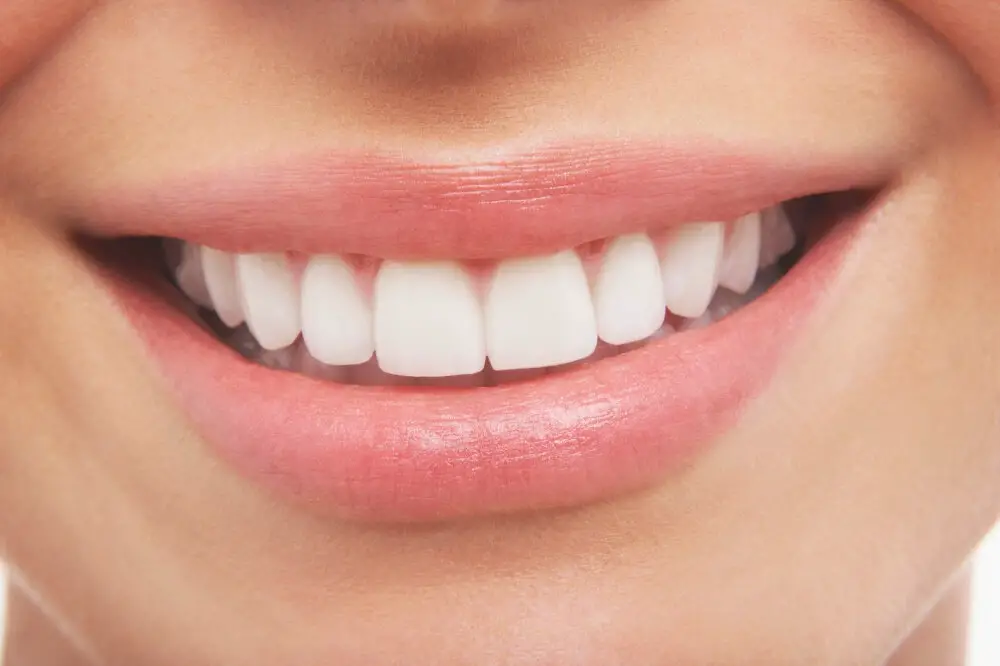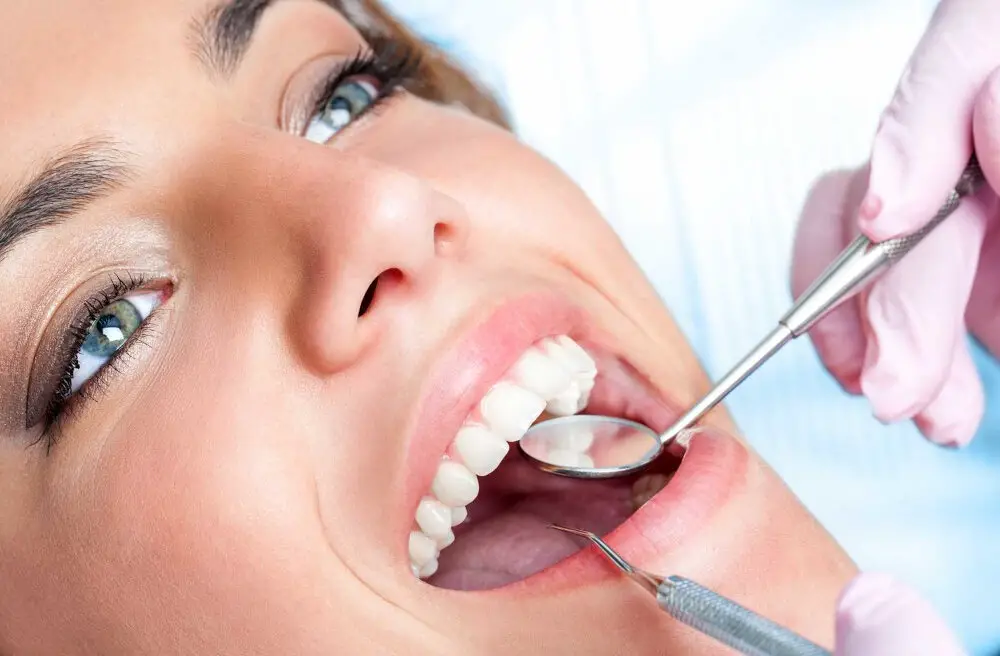Why Teeth Whitening Can Be Painful: Understanding the Causes and Solutions

Teeth whitening is a popular cosmetic procedure that many people opt for to achieve a brighter and more attractive smile. However, not everyone is aware that this process can sometimes be painful and uncomfortable. Understanding the causes and solutions to teeth whitening pain is important to make informed decisions and avoid unnecessary discomfort. One of the main reasons why teeth whitening can be painful is due to the sensitivity of the teeth. The whitening agents used in the procedure, such as hydrogen peroxide, can cause irritation and inflammation to the nerves of the teeth, leading to pain and discomfort. Furthermore, the process of teeth whitening can also cause the enamel of the teeth to temporarily weaken, making them more vulnerable to sensitivity and pain. It is therefore crucial to be aware of the potential causes of teeth whitening pain and to take appropriate measures to minimize or prevent it.
Teeth whitening is a cosmetic dental procedure that involves removing stains and discoloration from the teeth to enhance their appearance. The process can be done in-office or at home using various products like whitening toothpaste, strips, gels, or trays. However, teeth whitening can cause sensitivity or pain due to the use of harsh chemicals, overuse of products, or underlying dental issues. Therefore, it is essential to consult a dentist before undergoing any teeth whitening procedure to identify potential risks and get proper guidance on the most suitable treatment for your oral health.
Teeth whitening is a popular cosmetic treatment that aims to enhance the appearance of teeth by removing stains and discoloration. However, it is not uncommon for patients to experience pain or sensitivity during or after the procedure. Some common complaints include tooth sensitivity, gum irritation, and even a burning sensation in the mouth. These side effects can be caused by a variety of factors, such as the concentration of the whitening agent, the duration of the treatment, or pre-existing dental conditions. To minimize discomfort and achieve optimal results, it is important to consult with a dental professional and follow their recommendations for teeth whitening.
Causes of Pain During Teeth Whitening

Teeth whitening is a popular cosmetic dental procedure that can effectively remove stubborn stains and discoloration from the teeth. However, some people may experience pain or sensitivity during or after the treatment. There are several causes of pain during teeth whitening, including the use of high-concentration bleaching agents, gum irritation, and underlying dental problems. The most common cause of pain during teeth whitening is the use of high-concentration bleaching agents. These agents contain a high concentration of hydrogen peroxide, which can penetrate the enamel and dentin layers of the teeth, causing sensitivity. The longer the bleaching agent is left on the teeth, the more likely it is to cause pain or discomfort. In some cases, the bleaching agent may even cause chemical burns on the gums, leading to inflammation and pain. To avoid pain during teeth whitening, it is important to follow the instructions provided by your dental professional and use a low-concentration bleaching agent that is safe for your teeth and gums.
The bleaching process is a popular cosmetic dental treatment that aims to whiten discolored teeth. It involves the use of hydrogen peroxide or carbamide peroxide, which penetrates the enamel and breaks down the pigments that cause staining. However, this process can cause tooth sensitivity and pain, especially if the bleaching agent is too concentrated or if the teeth are already weakened or damaged. The peroxide can irritate the nerves in the teeth, leading to discomfort and even inflammation. Additionally, overuse of bleaching products can erode the enamel, making the teeth more vulnerable to decay and sensitivity in the long run. Therefore, it is essential to consult a dentist and follow the recommended guidelines for safe and effective teeth whitening.
Tooth sensitivity, gum recession, and existing dental problems can all contribute to pain during teeth whitening procedures. Tooth sensitivity occurs when the protective enamel of the teeth is worn down, exposing the underlying sensitive dentin layer. This can cause discomfort or pain when exposed to certain stimuli like cold or hot liquids or air. Gum recession, on the other hand, is caused by the loss of gum tissue around the teeth, exposing the root surface. This can cause pain during teeth whitening as the whitening agents can penetrate the exposed root surface. Existing dental problems such as cavities, cracked teeth, or gum disease can also exacerbate pain during teeth whitening. Therefore, it is important to address these issues before undergoing any whitening procedures to minimize pain and discomfort.
Solutions for Pain During Teeth Whitening

Teeth whitening is a popular cosmetic dental procedure that can help to enhance the appearance of your teeth and give you a brighter, more confident smile. However, it is not uncommon for some patients to experience pain or discomfort during or after the procedure. There are several solutions available to help alleviate this pain and make teeth whitening a more comfortable experience. One of the most common solutions for pain during teeth whitening is to use a desensitizing gel or toothpaste. These products work by blocking the nerve endings in your teeth, which can reduce sensitivity and pain. Desensitizing gels are typically applied directly to your teeth before and after the whitening procedure, while desensitizing toothpaste can be used daily to help prevent sensitivity and pain. Another solution is to use a lower concentration of whitening gel or to reduce the amount of time the gel is in contact with your teeth. This can help to reduce the intensity of the whitening process and make it more comfortable for those with sensitive teeth. Finally, using a custom-fitted whitening tray can help to ensure that the whitening gel is applied evenly and does not come into contact with your gums, which can cause pain or irritation. By taking these steps, you can enjoy the benefits of teeth whitening without experiencing unnecessary pain or discomfort.
If you’re planning on undergoing a teeth whitening treatment, it’s important to be aware that it may cause some sensitivity. However, using a desensitizing toothpaste or gel prior to your treatment can help minimize any discomfort. These products work by blocking the tiny tubules in your teeth that lead to the nerves, preventing any sensitivity from occurring. It’s recommended to use a desensitizing toothpaste or gel for a few weeks leading up to your treatment, as well as after your treatment to maintain the benefits. Not only will this help reduce any potential discomfort, but it will also ensure that you can enjoy the full benefits of a brighter, whiter smile.
Teeth whitening is a popular cosmetic dental treatment that can provide a brighter and more beautiful smile. However, it can be painful for some patients due to the sensitivity of their teeth and gums. To minimize contact with sensitive areas, customized bleaching trays are a great suggestion. These trays are designed to fit the unique shape of your teeth and gums, ensuring that the whitening gel only comes into contact with the surfaces that need it. This reduces the risk of the gel spreading to sensitive areas, such as the roots of teeth or the gums, which can cause discomfort or pain. By using customized bleaching trays, patients can enjoy the benefits of teeth whitening without the discomfort that often comes with it.
When it comes to teeth whitening, there are various methods available, apart from the traditional bleaching treatments. Light-activated whitening involves using a special light to accelerate the whitening process, which can be done in-office or at home with a special kit. Non-bleaching options, on the other hand, use a combination of polishing and chemical agents to remove surface stains from the teeth. These options include abrasive toothpaste, charcoal powder, and hydrogen peroxide-free whitening gels. While these methods may not be as effective as traditional bleaching treatments, they can be a good option for those who experience tooth sensitivity or want a more natural approach to teeth whitening. It’s important to consult with a dentist before trying any whitening method to ensure it’s safe and effective for your specific needs.
Causes of Pain After Teeth Whitening

Teeth whitening is a popular cosmetic dental procedure that promises to brighten your smile and boost your confidence. However, it’s not uncommon for patients to experience pain or sensitivity after teeth whitening. There are several causes of pain after teeth whitening, including the use of harsh chemicals, overexposure to the whitening agent, and tooth sensitivity. The most common cause of pain after teeth whitening is the use of hydrogen peroxide or carbamide peroxide, which are harsh chemicals that can irritate the gums and cause tooth sensitivity. Overexposure to the whitening agent can also cause pain, as it can damage the tooth enamel and expose the nerve endings. Tooth sensitivity can also be a factor, as teeth that are already sensitive may become even more so after teeth whitening. To avoid pain and sensitivity after teeth whitening, it’s important to choose the right whitening agent and follow the instructions carefully. For example, using a lower concentration of hydrogen peroxide or carbamide peroxide can reduce the risk of irritation and sensitivity. It’s also important to limit the amount of time that the whitening agent is in contact with your teeth, as overexposure can cause damage to the tooth enamel. If you already have sensitive teeth, you may want to consider using a desensitizing gel or toothpaste before and after the whitening procedure. Finally, if you experience severe pain or sensitivity after teeth whitening, you should consult your dentist, as it may be a sign of a more serious problem, such as a cavity or gum disease.
The use of bleaching agents to whiten teeth has become increasingly popular in recent years. While it can provide excellent results, it’s essential to understand that the bleaching agent can continue to affect the teeth after treatment is complete. This is because the bleaching process can weaken the tooth enamel, making it more susceptible to damage and discoloration. Additionally, some people may experience tooth sensitivity or pain after treatment, which can be caused by nerve irritation or damage. To minimize the risk of long-term damage, it’s essential to follow recommended guidelines for bleaching treatments and to speak with a dental professional about any concerns or symptoms that arise.
It is essential to understand that teeth whitening treatments, whether conducted professionally or at home, may come with potential side effects. These side effects include gum irritation, tooth sensitivity, and even enamel damage in some cases. Gum irritation is a common side effect that occurs when the whitening solution comes in contact with the gum tissue. To avoid this, it is recommended to use a custom-fitted tray to ensure the solution only touches the teeth. Enamel damage can occur with overuse of whitening products or using products with high acidity levels. It is crucial to follow the instructions and not to overuse the products to prevent the risk of enamel damage.
Solutions for Pain After Teeth Whitening

Teeth whitening is a popular cosmetic procedure that can leave some individuals with a painful aftermath. Fortunately, there are several solutions available for pain after teeth whitening. One of the most effective solutions is to use desensitizing toothpaste. This type of toothpaste contains ingredients that help soothe the nerves in the teeth and reduce sensitivity. Desensitizing toothpaste should be used for at least two weeks after teeth whitening to help alleviate any pain or discomfort. Another solution for pain after teeth whitening is to avoid consuming hot or cold foods and beverages for a few days. Extreme temperatures can cause sensitivity and pain to the teeth, so it’s best to stick to room temperature foods and drinks. Additionally, avoiding acidic foods and beverages, such as citrus fruits and carbonated drinks, can also help reduce pain and sensitivity. It’s important to note that these dietary restrictions should only be temporary and can be resumed after a few days once the pain has subsided.
If you have sensitive teeth, it is important to avoid certain foods and drinks that can exacerbate your discomfort. Acidic foods and drinks such as citrus fruits, tomatoes, and soda can erode your tooth enamel and cause sensitivity. Additionally, hot and cold beverages such as coffee and ice water can also trigger pain. Sugary foods and drinks, especially those containing high fructose corn syrup, can contribute to tooth decay and increase sensitivity. Instead, opt for foods and drinks that are gentle on your teeth, such as plain water, milk, and whole grains. Incorporating these changes into your diet can help alleviate sensitivity and promote overall dental health.
After undergoing teeth whitening treatment, it is common to experience tooth sensitivity, which can be quite painful. Fortunately, there are measures that can be taken to alleviate the discomfort. One such solution is the use of fluoride treatments or remineralizing products, both of which can help to strengthen teeth. Fluoride is a mineral that can be applied to teeth to help repair weakened enamel and prevent further damage. Remineralizing products work to restore minerals to the teeth, promoting strength and durability. These treatments can be particularly effective for individuals who have undergone teeth whitening, as the process can strip away some of the protective enamel, leaving teeth vulnerable to sensitivity. By incorporating fluoride or remineralizing products into your dental care routine, you can help to restore your teeth’s natural strength and reduce the discomfort associated with sensitivity.
If you experience tooth pain after teeth whitening, it is important to seek professional dental care if the pain persists or worsens. Pain after teeth whitening can be caused by a variety of factors, including sensitivity, enamel erosion, or even a more serious underlying dental issue. Ignoring the pain and allowing it to persist can lead to further damage and potentially serious dental problems. A dental professional can properly diagnose the cause of the pain and provide appropriate treatment to alleviate discomfort and prevent further damage. Don’t hesitate to seek professional care if you experience tooth pain after teeth whitening.
Teeth whitening, while a popular cosmetic procedure, often causes pain and discomfort during and after the treatment. The primary cause of pain during teeth whitening is the use of hydrogen peroxide or carbamide peroxide, which can irritate the nerves in the teeth and gums. Additionally, patients with pre-existing dental issues, such as cavities or gum disease, may experience more significant pain during the whitening process. To mitigate pain during teeth whitening, patients can opt for lower concentration whitening agents or take over-the-counter pain relievers before and after the treatment. Using desensitizing toothpaste and avoiding acidic or hot foods and drinks can also alleviate pain and sensitivity after the procedure.
It is essential to emphasize the importance of consulting with a dental professional before undergoing any teeth whitening treatment. While many over-the-counter products promise a brighter smile, they may not be suitable for everyone. A dental professional can evaluate the patient’s oral health, identify any underlying conditions that may interfere with the treatment, and recommend the best approach to achieve optimal results safely. Additionally, dental professionals have access to professional-grade whitening agents that are more effective and less likely to cause discomfort or sensitivity than over-the-counter products. Therefore, it is crucial to seek professional advice before undergoing any teeth whitening procedure to ensure that it is safe and effective.
Conclusion

In conclusion, teeth whitening, though a highly sought-after cosmetic dental procedure, can be a painful experience for many individuals. The causes of pain during or after the procedure can range from tooth sensitivity to gum irritation or even nerve damage. However, with proper diagnosis and treatment, these issues can be resolved, and the discomfort can be alleviated. Additionally, preventive measures such as using desensitizing toothpaste or opting for a more gradual whitening process can help avoid pain altogether. It is essential to consult with a dental professional and follow their guidance to ensure a safe and pain-free teeth whitening experience.







